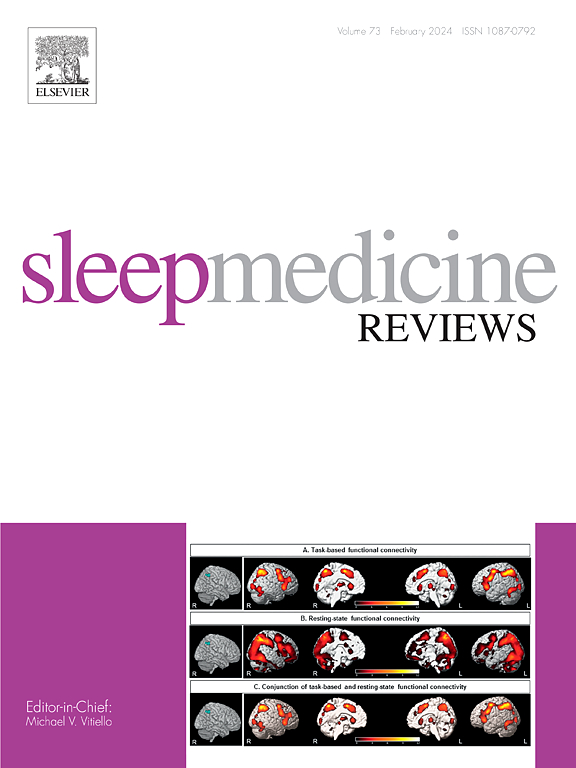Novel applications of sleep pharmacology as delirium therapeutics
IF 11.2
1区 医学
Q1 CLINICAL NEUROLOGY
引用次数: 0
Abstract
Sleep-wake and circadian disruption (SCD) is a core feature of delirium. It has been hypothesized that SCD contributes to delirium pathogenesis; therefore, interventions that prevent or reverse SCD represent an array of promising opportunities in relation to delirium. This review explores the relationship between sleep-wake/circadian physiology and delirium pathophysiology with a focus on neurotransmitter systems. Across potential targets aimed at preventing or treating delirium, three broad approaches are considered: 1. Pharmacological mechanisms that contribute to physiological sleep may preserve or restore next-day cognition in patients with or at risk for delirium (e.g., alpha 2 agonists, dopamine 2 antagonists, serotonin 2 A antagonists, dual orexin receptor antagonists, or GHB agonists); 2. Pharmacological mechanisms that promote wakefulness during the day may combat hypoactive delirium (e.g., adenosine 2 A antagonists, dopamine transporter antagonists, orexin agonists, histamine 3 antagonists); and 3. Melatonergic and other circadian interventions could strengthen the phase or amplitude of circadian rhythms and ensure appropriately entrained timing in patients with or at risk for delirium (e.g., as informed by a person's preexisting circadian phase).
睡眠药理学在谵妄治疗中的新应用。
睡眠-觉醒和昼夜节律紊乱(SCD)是谵妄的一个核心特征。据推测,睡眠-觉醒和昼夜节律紊乱是谵妄的发病机制之一;因此,预防或逆转睡眠-觉醒和昼夜节律紊乱的干预措施为谵妄的治疗提供了一系列大有可为的机会。本综述以神经递质系统为重点,探讨了睡眠-觉醒/昼夜节律生理学与谵妄病理生理学之间的关系。在预防或治疗谵妄的潜在目标方面,我们考虑了三大方法:1.有助于生理睡眠的药理机制可保持或恢复谵妄患者或有谵妄风险的患者次日的认知能力(如α2激动剂、多巴胺等)、2. 促进白天清醒的药理机制可对抗低能谵妄(如腺苷 2 A 拮抗剂、多巴胺转运体拮抗剂、奥曲肽受体双拮抗剂、组胺 3 拮抗剂);以及 3.褪黑激素能和其他昼夜节律干预措施可加强昼夜节律的相位或振幅,确保谵妄患者或有谵妄风险的患者的时间安排适当(例如,根据患者原有的昼夜节律相位)。
本文章由计算机程序翻译,如有差异,请以英文原文为准。
求助全文
约1分钟内获得全文
求助全文
来源期刊

Sleep Medicine Reviews
医学-临床神经学
CiteScore
20.10
自引率
3.80%
发文量
107
期刊介绍:
Sleep Medicine Reviews offers global coverage of sleep disorders, exploring their origins, diagnosis, treatment, and implications for related conditions at both individual and public health levels.
Articles comprehensively review clinical information from peer-reviewed journals across various disciplines in sleep medicine, encompassing pulmonology, psychiatry, psychology, physiology, otolaryngology, pediatrics, geriatrics, cardiology, dentistry, nursing, neurology, and general medicine.
The journal features narrative reviews, systematic reviews, and editorials addressing areas of controversy, debate, and future research within the field.
 求助内容:
求助内容: 应助结果提醒方式:
应助结果提醒方式:


